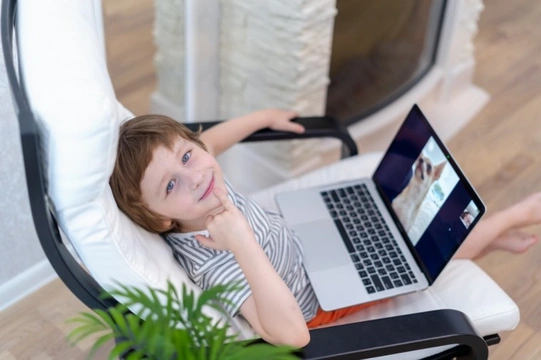
Do dogs respond positively to interactive cameras?
Remote cameras specifically designed for dog owners that let you not just see what your dog is up to at home, but let your dog see you too, and speak to and hear them – and even in some cases, actually trigger a treat being decanted for your dog – are becoming ever-more widely sold and popular.
But do dogs actually respond positively to interactive dog cameras, or do they just find the whole thing confusing or even distressing? Read on to find out.
They’re definitely going to find it a bit weird at first
Do you remember the first time your dog or puppy saw the TV? You might never have witnessed this “first” if you adopted an adult dog or got a puppy from a breeder that had a TV on a lot where the pups were housed, but if this is something you have seen you will probably remember how the dog’s reaction was hilarious!
Dogs find TV confusing until they get used to them; they can see movement but not necessarily the full depth and detail we see, and they can definitely hear the human voices with no humans present too.
Imagine then a first experience like this one but also to add to the weirdness from your dog’s point of view, your involvement. They can see you but you’re not there, they can hear you but not get to you or find you and most importantly for your dog, your scent is absent; which is likely to be the weirdest thing.
The closest allegory of how your face and voice but not body or scent would come across to a dog might be like if we as humans were interacting with a robot whose face looked like someone very dear to us.
Imagine the mixture of confused emotions that would generate; including potentially fear or aggression.
The first time or first few times then that you interact with your dog via a camera might be really odd, and generate a wide range of reactions from your dog, including confusion (almost certainly) and then anything from happiness and excitement to distress or frustration.
However, while many of us would never feel fully comfortable with a lifelike robot wearing the face of someone we cared about, dogs will generally get used to your regularly using a camera to interact with them!
Some dogs might get anxious
While all dogs will get used to you interacting with them via a camera with enough time and repetition, this does not always mean that the reaction from every dog will be positive.
When your dog begins to get used to the difference between your physical presence and interacting with you via video, most dogs would prefer the video interaction than none at all.
However, this is not always a good thing; specifically for some dogs that suffer from separation anxiety. For some such dogs, having a camera check-in can really help with this, and cause them to feel less anxious and alone, particularly when they’re being left for a few hours at a time.
This is not always the case though, and for some dogs that have separation anxiety, a video check in will get them het up and trigger their anxiety more acutely, either because you’re not really there or because you end the video interaction, when they might have been better left in a more settled state.
Monitoring how your dog reacts after you cut the feed from your end is important to tell how your dog manages, bearing in mind the that the response from your dog will settle down to a degree down the line as your dog gets more familiar with things over time.
Smart cameras that allow you to give treats tend to get a good response from dogs!
Some smart cameras for dog owners actually allow you to trigger a control to decant a treat for the dog, and these tend to get a universally good response from dogs, and also help dogs to build up positive associations with the camera and get past their initial confusion.
Dogs that are used to interacting with their owners or others via video tend to get to grips with interactive cameras quicker
If your dog is used to being called over to say hello to you via video from Zoom calls or other video comms when you’ve been away from home before but someone else is with the dog to manage things, your dog will probably get to grips with interactive cameras faster too.
This is because they’ll already have undergone a large part of the learning process.
Remote interaction is not a substitute for spending time with your dog
Finally, remote interactive cameras for dogs can hold value if you’re away, out at work and so on and miss your dog; but they in no way serve as a substitute for spending physical time with your dog and they cannot take care of your dog’s physical needs.
Think of them as a way to see what your dog is up to, say hi, possibly give them a treat, and as an enhancement and novelty; and not as anything more far-reaching nor a replacement for your time and presence.



